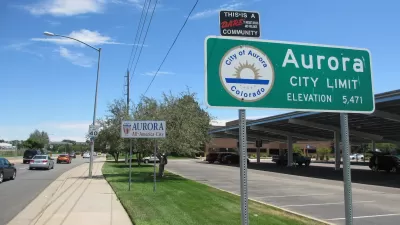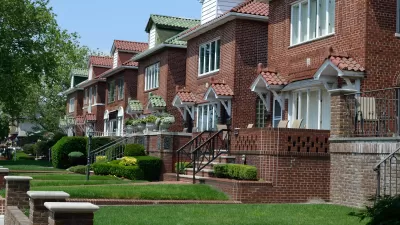Analysis from the Brooking Institution maps the so-called melting-pot suburbs, where demographics closely resemble the diverse population of the country as a whole.
William Frey explains the growing prominence of what he terms "melting pot suburbs," noting that more cities are coming to reflect the rest of American society with respect to race. "In 36 of the 100 largest metropolitan areas," Frey writes, "minorities represent at least 35 percent of the suburban population, approximately the same share as the nation. Within these, 16 have majority-minority populations, up from just eight in 2000."
After noting that most of the melting pot suburbs are located in the South and West (the few exceptions include suburban areas outside of New York and Chicago), Frey goes on to point a few of the implications of the new demographic realities of so many American cities, including "greater demands for services needed by new populations, particularly those with different economic circumstances and cultural linguistic backgrounds." The new paradigm of suburban diversity could also have implications in politics, as electoral battlegrounds shift in response to the new demographics.
FULL STORY: The rise of melting-pot suburbs

Planetizen Federal Action Tracker
A weekly monitor of how Trump’s orders and actions are impacting planners and planning in America.

Map: Where Senate Republicans Want to Sell Your Public Lands
For public land advocates, the Senate Republicans’ proposal to sell millions of acres of public land in the West is “the biggest fight of their careers.”

Restaurant Patios Were a Pandemic Win — Why Were They so Hard to Keep?
Social distancing requirements and changes in travel patterns prompted cities to pilot new uses for street and sidewalk space. Then it got complicated.

Platform Pilsner: Vancouver Transit Agency Releases... a Beer?
TransLink will receive a portion of every sale of the four-pack.

Toronto Weighs Cheaper Transit, Parking Hikes for Major Events
Special event rates would take effect during large festivals, sports games and concerts to ‘discourage driving, manage congestion and free up space for transit.”

Berlin to Consider Car-Free Zone Larger Than Manhattan
The area bound by the 22-mile Ringbahn would still allow 12 uses of a private automobile per year per person, and several other exemptions.
Urban Design for Planners 1: Software Tools
This six-course series explores essential urban design concepts using open source software and equips planners with the tools they need to participate fully in the urban design process.
Planning for Universal Design
Learn the tools for implementing Universal Design in planning regulations.
Heyer Gruel & Associates PA
JM Goldson LLC
Custer County Colorado
City of Camden Redevelopment Agency
City of Astoria
Transportation Research & Education Center (TREC) at Portland State University
Camden Redevelopment Agency
City of Claremont
Municipality of Princeton (NJ)





























